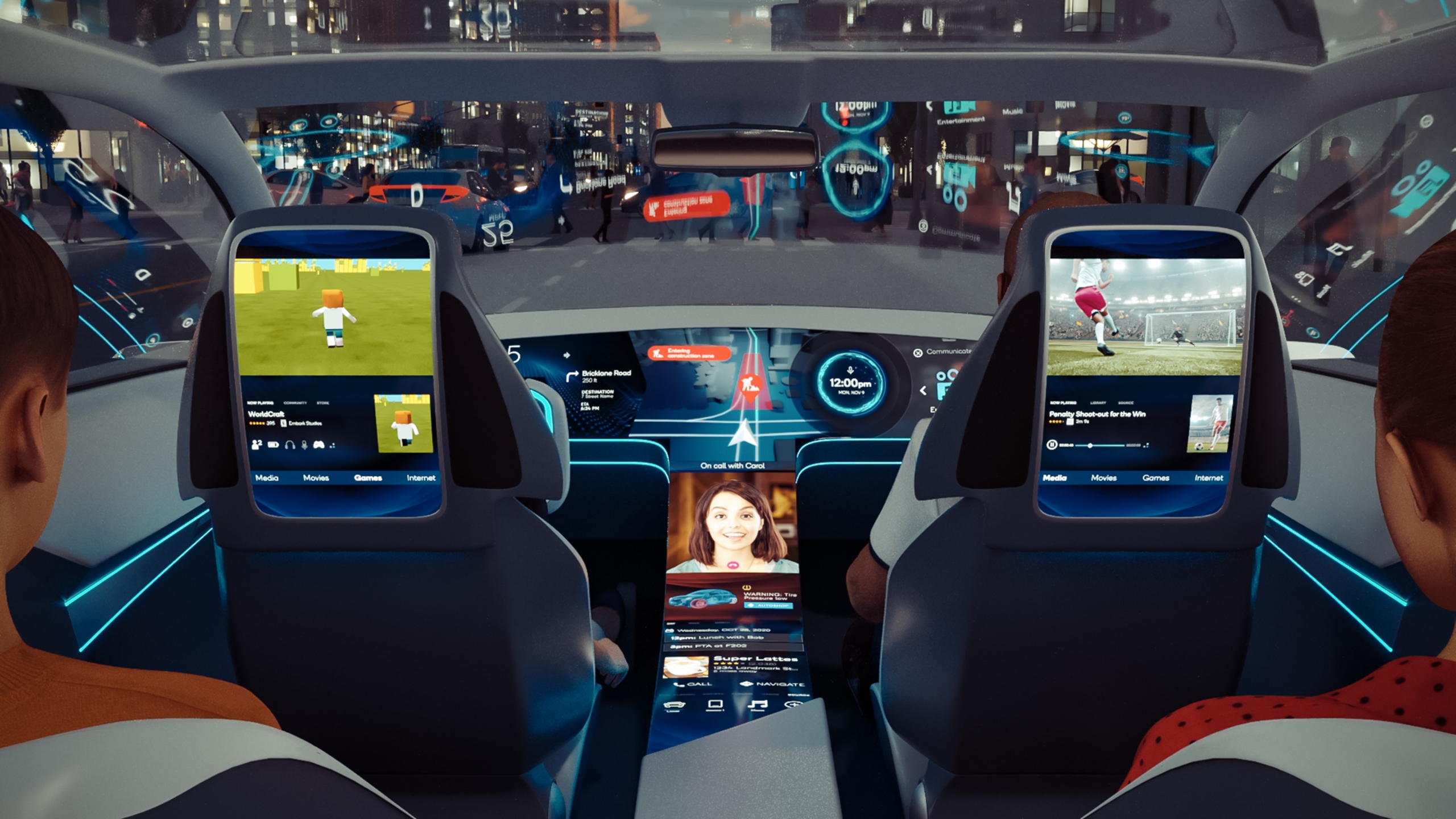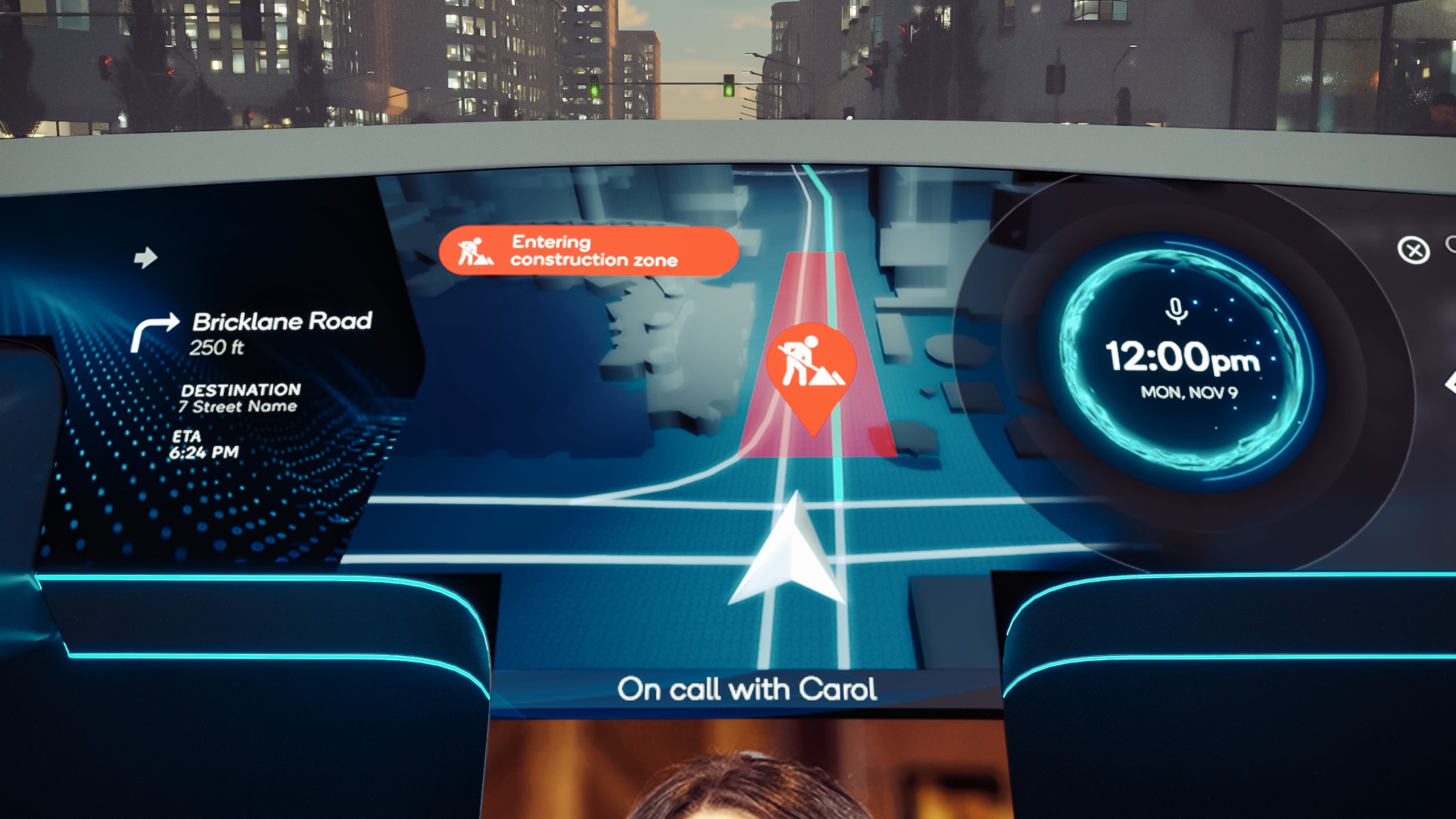The car of the future may be more powerful than the computer on your desk — thanks to one tiny silicon chip.
At the company’s “Automotive Redefined: Technology Showcase,” Qualcomm unveiled the fourth generation of its Snapdragon Automotive Cockpit platform, a plug-and-play answer to the question car manufacturers are wrestling with: How to bring the best of modern computing into an ordinary car. The latest version of the platform bundles advanced computing, machine learning, computer vision, and a suite of sensors into a chip no bigger than a silver dollar.
“We strive to deliver the industry’s most advanced digital cabin solutions and aim to reinvent the driver, passenger and rear-seat entertainment and contextual awareness experience, while also addressing the automakers’ shift to zonal compute architectures with the fusion of compute, performance, A.I., and safety,” said Nakul Duggal, senior vice president & GM, automotive for Qualcomm.

That chip — the heart of the platform — is built using advanced, 5nm process technology, Qualcomm says, enabling the company to pack more silicon into a smaller than ever package. But one chip alone won’t turn an ordinary car into a self-driving machine. It’ll require miles of networking cable throughout the vehicle, a slew of sensors including radar, lidar, and high definition cameras, additional chips throughout the car, and so on.
Still, the brains of tomorrow’s vehicles are the crucial component shaping the advancement of the automotive world. What features they bring will shape our experience driving tomorrow. So what’s supported in the chip?
- Artificial intelligence, not just to pilot your car but also to learn and adapt to your preferences. Imagine a car that can sense how many passengers it has and where they are seated, and adjust not just seat positions but climate and entertainment to their preferences.
- Multimedia galore, meaning support for multiple high-definition screens throughout the vehicle. Tomorrow’s cars will allow everyone to watch the same show, or let all each passenger choose their own show.
- Powerful processors, notably the sixth-gen Kyro CPU, which supports virtualization — a necessary computing feature meant to isolate mission-critical systems such as navigation, breaking, and passenger safety systems from less important ones, such as entertainment. In theory, your streaming media can stutter, but your throttle never will.
- An augmented reality heads-up display, pushing navigation to a new frontier. Picture arrows on the windscreen showing you which direction to turn, details about the buildings around you, or the attractions you drive by.
- Immersive audio, beyond the gazillion-channel surround sound systems you’ll find in ordinary cars. Qualcomm describes it well: “Personalized multi-audio zones customized for each user, and crystal clear in-car communication and active noise and echo cancellation with engine and road-noise noise suppression capabilities.” Yes please!
The platform also supports a variety of other technologies, including the typical alphabet soup of acronyms: The Blackberry QNX real-time OS, Linux, and C-V2X technology, the latest iteration of a long-running dream in the connected car world. In theory, C-V2X (essentially short for “vehicle to anything communication”) means your car will talk to the road, the street signs you pass, other cars, your house, and so on, to ensure seamless, safe driving.
In reality, it’s going to take decades for the infrastructure to be built to fully support such a system. But it’s a wonderful idea!
Qualcomm said the platform will begin production in 2022, but reference designs of the system will be available for automakers this summer. Look for it soon in a car cockpit near you.




